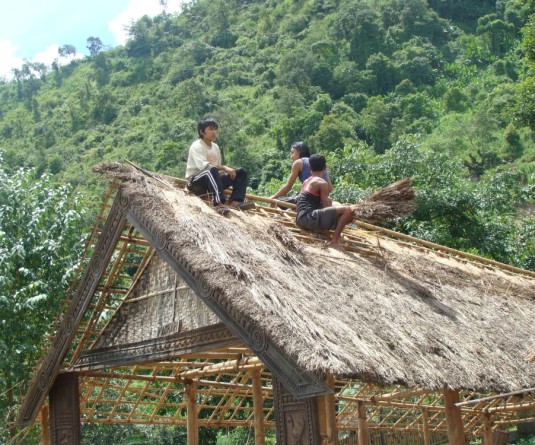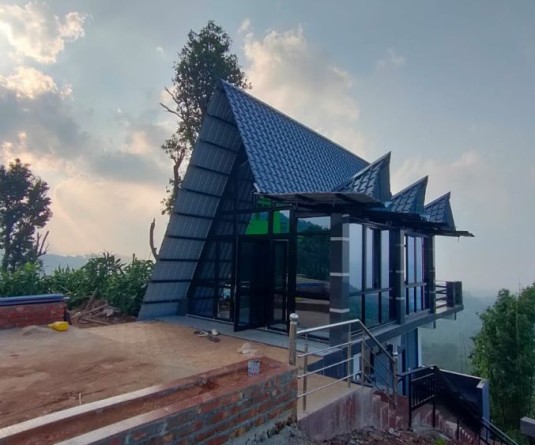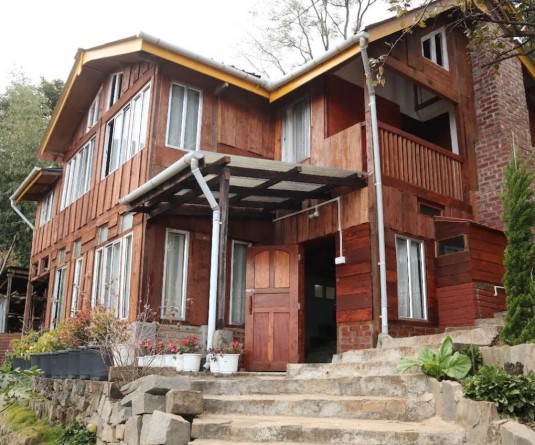Vehicles stuck in a traffic jam at Nagarjan junction in Dimapur. (Morung Photo)
Morung Express News
Dimapur | March 20
Traffic congestion is a major problem in most urban centres across the world. Dimapur is no exception. With the increase in the number of motor vehicles in Nagaland, the narrow roads of Dimapur and the lack of town planning effectively clog traffic flow. This problem has existed for some time now, and concerns have been reiterated.
However, a new facet has been added to this problem of late. Most traffic jams in previous years were seen to occur at the main town centre, in areas like Nyamo Lotha road, Hong Kong Market, Marwaripati, Circular Road etc. At present the national highway stretch running across the Purana Bazaar area is another traffic clog spot in the making. Traffic congestion catching up with an area relatively removed from the main town indicates a worsening of the problem.
Nukshi Lemtur, who has to travel everyday from Chumukedima to Midland, reveals that the drive that used to take him only forty five minutes now takes “almost an hour and a half.”
The administration has tried to curb this problem by disallowing three wheelers from plying for certain periods of time in certain traffic hotspots. Though this has had a positive effect on the traffic flow, the overall problem of congestion persists.
Disproportion between the number of vehicles and the width of roads along with the number of roads contribute to this problem.
According to a report by the Department of Economics and Statistics, there has been a 15.69 per cent increase in the number of registered vehicles from 2006 to 2008 in the state. This indicates an annual increase of 7.8 percent in the number of cars.
The report shows a yearly addition of approximately 15500 vehicles to the roads of Nagaland. This is the only official data available and hence only an estimate can be drawn on the number of vehicles plying the roads of the state. If the reported increase is taken as a constant annually, at present there could be around 3, 11,000 vehicles plying the state! The concentration of these in Dimapur and Kohima, without the desired infrastructure, magnifies the problem.
The Morung Express asked some people to offer recommendations to address this issue. Orenthung from Dimapur is of the opinion that a part of the responsibility is the motorist’s. “I’m talking about simple actions like parking sensibly, following traffic rules, walking to destinations which are not far off,” he offers.
Tovito from Dimapur stated that the only solution seems to be “the construction of new roads or widening the existing ones.” However, Limasangla, another Dimapur resident seems to contradict this idea by saying that it is “impractical.” She says, “The construction of new roads or even to widen the roads in town would require most buildings to be demolished. It’s not practical.”
She is however open to the idea of constructing flyovers. “Unless the administration is ready for a total makeover of the town, flyovers seem to be an expensive but plausible option.” She adds with a smile, “I’m sure they can afford it.”
Former minister for Urban Development, Shürhozelie Liezietsu had commented on the issue of urban planning in December 2012. Liezietsu was commenting on Nagaland having the highest rate of urbanization, as recorded in the 2011 census. He pointed out that the unavailability of sufficient land in urban areas and land ownership issues have become a bottleneck in the planning process adversely affecting developmental works.
Kevi from Dimapur states, “If building new roads or construction of over bridges is deemed too expensive or too complicated, then the government’s supposed effort to bring progress and development is put to question.” He adds, “If we are serious about developing our towns, we should not be scared of radical change.”
The rise in urbanization has contributed to the need for more infrastructure development. Traffic congestion, which is an everyday nuisance for motorists have raised questions on issues like town planning, proper utilization of funds and land ownership reform. The people quoted in this piece are all in agreement that any solution to this problem is complicated. However, they also expressed hope to see a more proactive role played by concerned authority.






